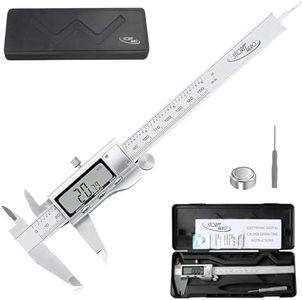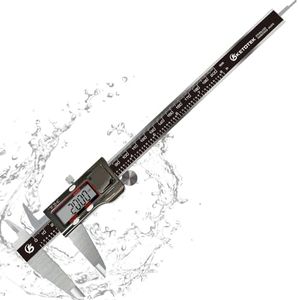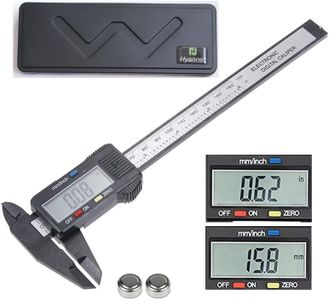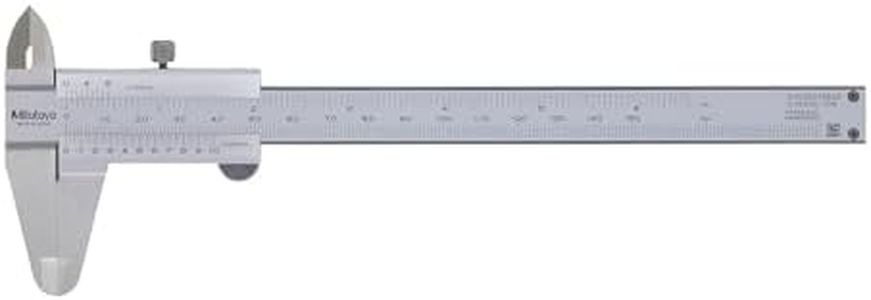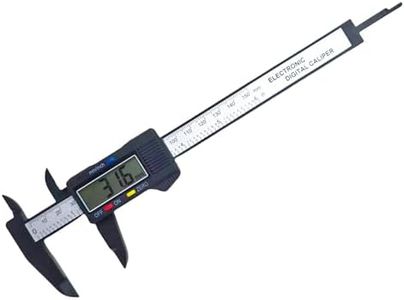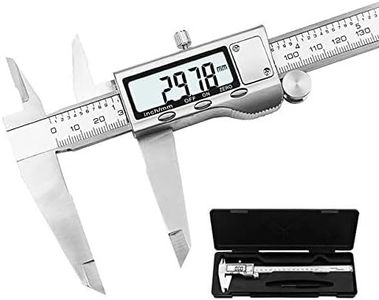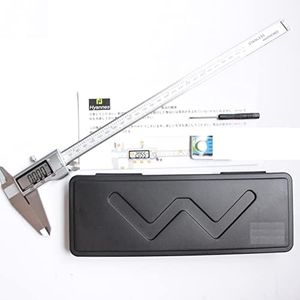We Use CookiesWe use cookies to enhance the security, performance,
functionality and for analytical and promotional activities. By continuing to browse this site you
are agreeing to our privacy policy
10 Best Digital Calipers
From leading brands and best sellers available on the web.By clicking on a link to a third party's website, log data is shared with that third party.
Buying Guide for the Best Digital Calipers
Choosing the right digital calipers is important whether you’re working on DIY projects, in a workshop, or handling precision measurements for hobbies or professional use. The best digital calipers make measuring easy, accurate, and comfortable, so understanding the key features can help you decide which model matches your needs. By paying attention to the main specifications, you can ensure you get a tool that works reliably and suits your tasks.Measurement RangeThe measurement range tells you the smallest and largest distances the caliper can measure, usually shown in millimeters or inches. A short-range caliper (around 4 inches or 100mm) is lighter and good for small objects or tasks like jewelry or electronics. Standard calipers (6 inches or 150mm) work for most general measuring needs, while larger models (8 inches/200mm or 12 inches/300mm) handle bigger parts like automotive or industrial work. Think about the size of items you usually measure and make sure the caliper’s range is enough for those tasks without being unnecessarily big or bulky.
AccuracyAccuracy describes how close the caliper’s measurement is to the actual size. It's usually given as a plus-or-minus value (like ±0.02mm or ±0.001 inch). Higher accuracy is important for precision work such as machining or scientific tasks, while less critical jobs don’t need such tight tolerances. If your measurements need to be very precise, look for a caliper that offers better accuracy, but for general home or hobby use, standard accuracy will likely be good enough.
ResolutionResolution shows the smallest unit the caliper can display, reflecting how detailed your measurements can be. Common resolutions are 0.01mm or 0.0005 inch. Higher resolution lets you take finer measurements, which is helpful for high-precision tasks. If you do not need extreme detail, a standard resolution is fine and often faster to read, but if exact numbers matter for your project, a caliper with fine resolution is a smarter pick.
Material and Build QualityCalipers can be made from stainless steel, plastic, or a mix of materials. Stainless steel is more durable and suitable for heavier use, while plastic can be lighter and cheaper but less sturdy. If you’ll use the calipers often or in a workshop, invest in a sturdy metal caliper, but for occasional, light measurements, a plastic version may be convenient and sufficient.
Display Size and TypeDigital calipers feature an electronic display that shows your measurement. Larger displays make readings easier, especially for those with vision challenges. Some displays include extra features, like a backlight or different unit modes. If easy reading is a priority or you work in a dim environment, a big, clear display can be a real advantage when picking a caliper.
Zeroing and Unit ConversionMany digital calipers allow you to set the zero point at any position, making it easy to measure differences or depths. Most can also switch between measurement units (imperial and metric) with a button. If you work with multiple measurement systems or need to compare relative sizes, make sure the caliper has these handy features for flexibility.
Battery Life and TypeDigital calipers run on small batteries, so battery life matters for convenience. Some models save power by turning off automatically, while others may drain quickly. Check whether the battery is common and easy to replace. If you use the tool often or in remote settings, battery life can save hassle and interruptions.
Extra FunctionsSome digital calipers have added features like data output ports for connecting to a computer or memory for saving measurements. Consider if these functions matter for your workflow, especially if you plan to log measurements or work in a professional setting. For most basic tasks, these extras aren’t necessary, but for advanced users, they can make work more efficient.
